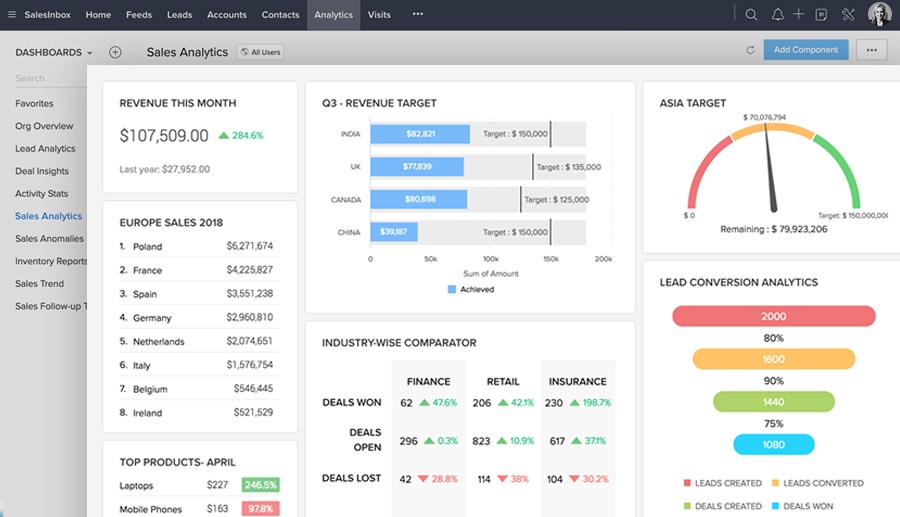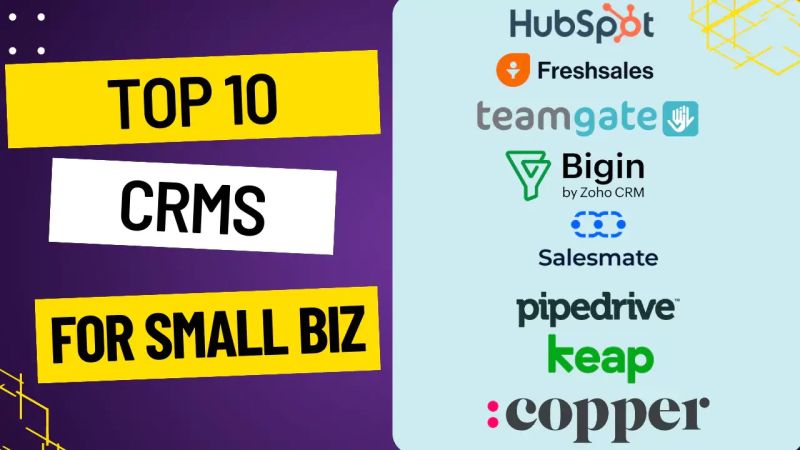Small Business CRM Setup: Your Step-by-Step Guide to Customer Relationship Management Success
Starting a small business is an exciting adventure. You’re the captain of your own ship, navigating the waters of entrepreneurship. But as your business grows, so does the complexity of managing your customer relationships. That’s where a Customer Relationship Management (CRM) system comes in. Think of it as your business’s central nervous system, connecting all the vital organs – sales, marketing, customer service – to ensure everything runs smoothly. Setting up a CRM might seem daunting, but trust me, it’s a game-changer. This comprehensive guide will walk you through every step of the process, from understanding the basics to implementing a system that perfectly fits your small business needs. Let’s dive in!
What is a CRM and Why Does Your Small Business Need One?
Before we get into the nitty-gritty of setup, let’s clarify what a CRM is and why it’s crucial for your small business’s success. CRM stands for Customer Relationship Management. At its core, a CRM is a software solution designed to manage all your interactions with current and potential customers. It’s more than just a contact list; it’s a powerful tool that helps you:
- Centralize Customer Data: Store all customer information in one accessible place, including contact details, purchase history, communication logs, and more.
- Improve Sales Performance: Track leads, manage sales pipelines, and automate tasks to close deals faster.
- Enhance Customer Service: Provide personalized support, resolve issues efficiently, and build stronger customer relationships.
- Boost Marketing Effectiveness: Segment your audience, personalize marketing campaigns, and measure campaign performance.
- Gain Valuable Insights: Analyze customer data to understand their behavior, identify trends, and make data-driven decisions.
In today’s competitive landscape, providing exceptional customer experiences is no longer optional; it’s a necessity. A CRM empowers you to do just that, allowing you to nurture leads, personalize interactions, and build lasting customer loyalty. For a small business, this can be the difference between surviving and thriving.
Choosing the Right CRM for Your Small Business
The CRM market is vast, with options ranging from simple contact management tools to comprehensive enterprise solutions. The key is to choose a system that aligns with your specific business needs and budget. Here are some factors to consider when making your selection:
1. Define Your Needs and Goals
Before you start comparing CRM systems, take some time to assess your business needs. What are your primary goals for implementing a CRM? Are you looking to improve sales, enhance customer service, or streamline marketing efforts? Identify the specific features and functionalities that are most important to you. Consider these questions:
- What are your current pain points in managing customer relationships?
- What processes do you want to automate?
- What data do you need to track and analyze?
- What is your budget?
- How many users will need access to the CRM?
Answering these questions will help you narrow down your options and choose a CRM that truly meets your requirements.
2. Key Features to Look For
Once you’ve defined your needs, you can start evaluating different CRM systems based on their features. Here are some essential features to consider:
- Contact Management: The ability to store and organize customer contact information, including names, addresses, phone numbers, and email addresses.
- Lead Management: Features for tracking leads, nurturing them through the sales pipeline, and assigning them to sales representatives.
- Sales Automation: Tools for automating repetitive sales tasks, such as sending emails, scheduling appointments, and generating reports.
- Marketing Automation: Features for creating and managing marketing campaigns, segmenting your audience, and tracking campaign performance.
- Customer Service: Tools for managing customer support tickets, tracking customer interactions, and providing personalized support.
- Reporting and Analytics: The ability to generate reports and analyze data to track key performance indicators (KPIs) and make data-driven decisions.
- Integration: Compatibility with other tools you use, such as email marketing platforms, accounting software, and social media channels.
- Mobile Accessibility: The ability to access and manage your CRM data from your mobile devices.
3. Consider Your Budget
CRM systems vary widely in price, from free or freemium options to expensive enterprise solutions. Determine how much you’re willing to spend on a CRM system, considering both the initial setup costs and ongoing subscription fees. Don’t forget to factor in the cost of training and support. Many CRM providers offer different pricing tiers based on the number of users and the features you need. Start with a plan that meets your current needs and scale up as your business grows.
4. Research and Compare CRM Systems
With your needs and budget in mind, start researching different CRM systems. Read reviews, compare features, and explore pricing plans. Consider popular options like:
- HubSpot CRM: A free, user-friendly CRM that’s ideal for small businesses.
- Zoho CRM: A versatile CRM with a wide range of features and affordable pricing.
- Salesforce Sales Cloud: A powerful CRM with advanced features, suitable for growing businesses.
- Pipedrive: A sales-focused CRM with a visual pipeline and intuitive interface.
- Freshsales: A CRM designed for sales teams, with built-in phone and email features.
Many CRM providers offer free trials or demos, so take advantage of these opportunities to test out the systems and see which one best fits your needs.
Step-by-Step Guide to Setting Up Your CRM
Once you’ve chosen the right CRM for your small business, it’s time to set it up. Here’s a step-by-step guide to help you get started:
1. Create an Account and Configure Basic Settings
The first step is to create an account with your chosen CRM provider. Follow the provider’s instructions to sign up and set up your account. This typically involves providing your business information, choosing a username and password, and configuring basic settings, such as your timezone, currency, and company logo.
2. Import Your Data
The next step is to import your existing customer data into the CRM. Most CRM systems allow you to import data from spreadsheets (like Excel or Google Sheets) or other CRM systems. Prepare your data by organizing it into a clean, structured format. Make sure your data includes all the necessary fields, such as contact names, email addresses, phone numbers, and any other relevant information. Follow the CRM’s instructions to import your data. The system will typically guide you through the process of mapping your data fields to the corresponding fields in the CRM.
3. Customize the CRM to Fit Your Needs
Once your data is imported, it’s time to customize the CRM to fit your specific business needs. This may involve:
- Adding Custom Fields: Create custom fields to store data that’s specific to your business, such as industry, customer type, or preferred communication method.
- Creating Custom Views: Customize the way you view your data by creating custom views that display the information you need most.
- Setting Up Workflows: Automate repetitive tasks by setting up workflows that trigger actions based on specific events, such as sending an email when a lead is created or updating a deal stage when a task is completed.
- Configuring Integrations: Connect your CRM to other tools you use, such as email marketing platforms, accounting software, and social media channels.
4. Train Your Team
Training your team is crucial for the successful implementation of a CRM. Provide your team with comprehensive training on how to use the CRM, including how to enter data, manage leads, track sales, and generate reports. Offer ongoing support and encourage your team to ask questions and provide feedback. Consider creating training materials, such as user manuals, video tutorials, and cheat sheets, to help your team learn the system.
5. Start Using the CRM
Once your CRM is set up and your team is trained, it’s time to start using it! Encourage your team to use the CRM consistently to manage their customer interactions, track their sales activities, and collaborate with each other. Make sure everyone understands the importance of keeping the data up-to-date and accurate. Monitor your team’s usage and provide support as needed.
6. Monitor and Optimize
Implementing a CRM is an ongoing process. Regularly monitor your CRM usage and performance to identify areas for improvement. Analyze your data to track your progress toward your goals and identify any issues that need to be addressed. Make adjustments to your CRM configuration, workflows, and training as needed to optimize your performance. Regularly review your CRM setup to ensure it’s still meeting your needs as your business evolves.
Tips for Successful CRM Implementation
Here are some additional tips to help you successfully implement your CRM:
- Start Small: Don’t try to implement everything at once. Start with the core features and gradually add more functionality as you become more comfortable with the system.
- Involve Your Team: Get your team involved in the CRM selection and implementation process. Their input will help you choose a system that meets their needs and ensure they are invested in using it.
- Communicate Clearly: Communicate the benefits of the CRM to your team and explain how it will help them be more efficient and productive.
- Provide Ongoing Support: Offer ongoing support and training to help your team use the CRM effectively.
- Be Patient: Implementing a CRM takes time and effort. Don’t get discouraged if you don’t see results immediately. Stay consistent, and you’ll eventually see the benefits.
- Clean Your Data Regularly: Regularly clean and update your data to ensure its accuracy.
- Automate, But Don’t Over-Automate: Automate repetitive tasks, but avoid over-automating processes that require human interaction.
- Integrate with Your Website: Consider integrating your CRM with your website to capture leads and track customer interactions.
- Use Mobile Apps: Utilize mobile apps to access your CRM data on the go.
- Regularly Back Up Your Data: Protect your data by regularly backing it up.
Troubleshooting Common CRM Setup Issues
Even with the best planning, you might encounter some challenges during your CRM setup. Here are some common issues and how to address them:
- Data Import Problems: If you’re having trouble importing your data, double-check that your data is in the correct format and that all the required fields are included. Consult the CRM’s documentation or contact their support team for assistance.
- User Adoption Issues: If your team is resistant to using the CRM, provide additional training and support. Emphasize the benefits of the CRM and how it will help them be more efficient. Address any concerns they may have and make it clear that using the CRM is a priority.
- Integration Problems: If you’re having trouble integrating your CRM with other tools, make sure you have the correct login credentials and that the integration is properly configured. Consult the documentation for both the CRM and the other tool.
- Slow Performance: If your CRM is running slowly, try optimizing your data by removing unnecessary data or reducing the number of custom fields. Contact the CRM provider for assistance if the problem persists.
- Lack of Customization: If you find that the CRM doesn’t offer the customization options you need, consider upgrading to a more advanced plan or exploring other CRM options.
Maximizing the Benefits of Your CRM
Once your CRM is up and running, there are several ways to maximize its benefits and get the most out of your investment:
- Use the CRM Consistently: Make it a habit to use the CRM every day to manage your customer interactions, track your sales activities, and collaborate with your team.
- Analyze Your Data Regularly: Regularly analyze your CRM data to gain insights into your customer behavior, identify trends, and make data-driven decisions.
- Personalize Your Customer Interactions: Use your CRM data to personalize your customer interactions, such as sending targeted emails, providing personalized support, and offering tailored promotions.
- Automate Your Workflows: Automate repetitive tasks, such as sending emails, scheduling appointments, and generating reports, to save time and improve efficiency.
- Integrate Your CRM with Other Tools: Integrate your CRM with other tools you use, such as email marketing platforms, accounting software, and social media channels, to streamline your workflows and improve data sharing.
- Stay Up-to-Date: Keep your CRM updated with the latest features and integrations.
- Seek Customer Feedback: Use your CRM to gather customer feedback and identify areas for improvement.
- Continuously Refine Your Processes: Continuously refine your processes based on your CRM data and customer feedback.
The Future of CRM for Small Businesses
The CRM landscape is constantly evolving, with new features and technologies emerging all the time. Here are some trends to watch for:
- Artificial Intelligence (AI): AI-powered CRM systems can automate tasks, provide insights, and personalize customer interactions.
- Mobile CRM: Mobile CRM systems are becoming increasingly important, allowing businesses to access and manage their customer data from anywhere.
- Social CRM: Social CRM systems integrate with social media channels, allowing businesses to monitor social media conversations, engage with customers, and build brand awareness.
- Personalized Customer Experiences: CRM systems are becoming more focused on providing personalized customer experiences, allowing businesses to tailor their interactions to each customer’s individual needs and preferences.
- Data Privacy and Security: Data privacy and security are becoming increasingly important, with CRM systems focusing on protecting customer data and complying with data privacy regulations.
By staying informed about these trends, you can ensure that your CRM system remains effective and continues to meet your business needs.
Conclusion: Embrace the Power of CRM
Setting up a CRM for your small business is a significant step towards building stronger customer relationships, improving sales performance, and driving business growth. By following the step-by-step guide outlined in this article, you can choose the right CRM, set it up effectively, and maximize its benefits. Remember to define your needs, research your options, involve your team, and continuously monitor and optimize your CRM implementation. With the right CRM in place, you’ll be well-equipped to navigate the challenges of entrepreneurship and achieve long-term success. Don’t wait; start your CRM journey today and unlock the full potential of your customer relationships! The future of your business is in your hands, and a well-implemented CRM is a powerful tool to help you shape it.


